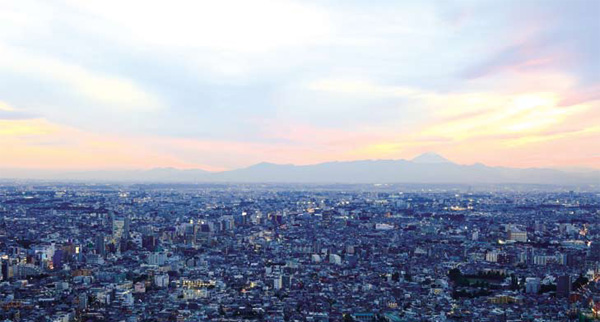The land of the rising sun has always been at the forefront of engineering innovations and business best practices.
The land of the rising sun has always been at the forefront of engineering innovations and business best practices. What makes Japan Inc tick and what are the aspects that make its HVACR products tick? To understand this, Climate Control Middle East turned to Arne Heuzeroth, Head of Business Unit, at Yazaki Europe Ltd – Environment and Energy Equipment Operations. The GCC region is among the most attractive and challenging HVACR markets for Japan, and Yazaki, like its Japanese counterparts, is discovering that the potential for alternative cooling solutions is huge. The Cologne, Germany-based Heuzeroth gave us an idea of how Yazaki and other companies view the region.
 How has your company progressed as a business in these most challenging of times? What strategies has it adopted to overcome the downturn?
How has your company progressed as a business in these most challenging of times? What strategies has it adopted to overcome the downturn?
The absorption cooling market occupies a niche in the global HVAC market. Absorption sales in the EU and MENA region show a constant growth. Thus, the downturn may have hit Yazaki less than larger global HVAC equipment providers.
Have regulations and standards in Japan relating to engineering innovation, energy efficiency, reliability, ease of installation or sustainable practices got your company to come up with best practices and innovations, which you are able to leverage in the region to your benefit? Are you being able to proactively transfer Japan’s mature business culture to this region, considering that regulations and standards are still being developed in the region?
Japan is among the world’s leading absorption cooling markets. The market is thus far more mature and developed than, for example, the Middle East. Yazaki has been pioneering the absorption market since 1969. We have started the mass production of our Yazaki Aroace absorption chillers in 1970. This experience in developing and manufacturing absorption chillers has helped us to set a standard for vacuum-charged chillers filled with refrigerant, water and inhibitors. The advantages during commissioning and servicing as well as the reliability of our products have helped us to grow into our overseas markets. Also, Japan – being the host nation of the Kyoto Protocol – is strongly committed to a national policy of CO2 reduction and energy efficiency. Thus, pro-actively promoting energy-efficiency and helping our customers to reduce their CO2 footprints is something that comes naturally to us.
What are the types of projects you are supplying to in Japan and elsewhere in Asia, Europe and North America? What innovations do they contain? Are customers responsive to innovations?
Traditionally, the majority of absorption sales consist of direct gas-fired chillers. These products appeal to markets where gas has a relative price advantage over electricity. However, we also observe a market trend towards hot water-driven chillers. Yazaki’s Water Fired Chiller (WFC) series provides chilled water temperatures of 6 deg C from hot water inlet temperatures as low as 75 deg C. The WFC can, thus, provide cooling from hot water sources, such as generator exhaust, industrial waste heat or solar thermal collectors (solar cooling).
The concept of solar cooling is especially attractive for the markets in the Middle East, where the high solar radiation guarantees for constantly high solar hot water temperatures to efficiently drive absorption chillers. Solar cooling combined with existing compression chillers is a clean alternative to reduce electric consumption as well as CO2 emissions.
Is there a lucrative market for you in the GCC? Are engineering innovations a significant part of your strategy to grow your business in the GCC in these challenging times?
The GCC is among the most attractive and challenging HVAC markets. The potential for alternative cooling solutions is huge, especially as governments in the GCC have become more aware of the increasing challenges of power supply and emission schemes. Some have started to promote more sustainable building standards. The challenge for the growth of absorption cooling in the Middle East will depend on how far designers and integrators will succeed in embedding the obvious advantages of absorption technology into innovative building concepts.
What is your perspective on the business environment in the region, and what have you accomplished in the last six months, in terms of orders booked and business growth?
While some parts of the region continue to struggle with the effects of the financial downturn, others have entered a transitory political process. While it is very difficult to forecast the exact business implications, we are confident that the long-term prospects for our business in the region remain positive. This is, above all, due to the dynamic demographics of the region and the increasing demand for alternative cooling solutions.
In this downturn, is there a shift in focus in the GCC, with more attention given to Qatar and Saudi Arabia, which seem to be the least affected of the GCC states?
Qatar and Saudi Arabia are very dynamic markets with numerous future construction activities. However, we will also retain our focus on other selected markets in the GCC and the Middle East.
Has the downturn compelled you to change your strategies vis-à-vis the GCC? What changes have you made to your strategy compared to a year ago? Or are you retaining your long-term strategies?
We are retaining our long-term strategy. However, we have been adapting our strategic objectives regarding selective markets.
Copyright © 2006-2025 - CPI Industry. All rights reserved.